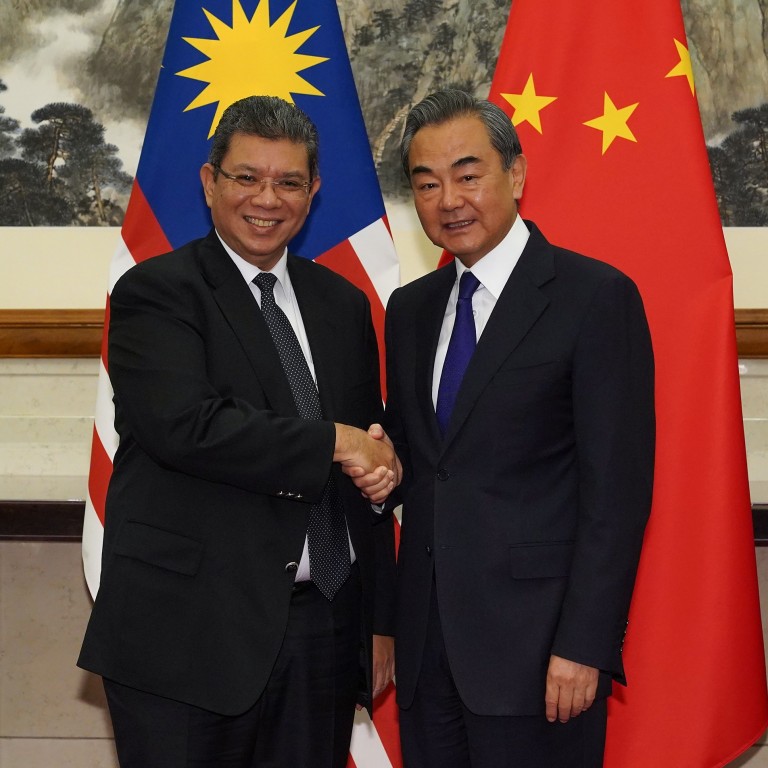
China, Malaysia seek to resolve South China Sea disputes with new dialogue mechanism
- Chinese Foreign Minister Wang Yi says arrangement will provide a ‘new platform for cooperation’
- Tensions in disputed waterway ‘have dropped recently’, he says
“Tensions in the South China Sea have dropped recently. Littoral states and China are committed to appropriately handling the South China Sea issue and jointly safeguarding peace and stability there,” Wang said.
“To this end, our two sides have agreed to set up a bilateral consultation mechanism for maritime issues. A new platform for dialogue and cooperation.”
Abdullah, who referred to Wang as “my brother”, said the mechanism would be managed by the two countries’ foreign ministries and that more details would follow.
The platform is the latest move by Beijing to find ways to settle disputes in the South China Sea on a one-to-one basis.
China has had long-running disputes with rival claimants Vietnam, the Philippines and Malaysia, and the issue has also been the focus of rising tensions between Beijing and Washington.
Brunei and Taiwan also lay claim to parts of the South China Sea, which is one of the world’s busiest waterways.

Xu Liping, a senior research fellow at the National Institute of International Strategy under the Chinese Academy of Social Sciences, said Beijing’s agreement with Kuala Lumpur would help to ease disputes between the two countries and also contribute to overall peace in the disputed waters.
“There are two main aims for the dialogue mechanism: one is dispute settlement and addressing sovereignty issues, the other is boosting cooperation in areas like fishing and security,” he said.
“If China has better cooperation with Malaysia, then ultimately it will contribute to resolving and reaching consensus on issues with other countries.”
‘Ball in Beijing’s court’ on South China Sea, Duterte says
An initial draft was presented in August last year, and in November the parties involved committed to finalising the code by 2021.
Progress since then, however, has been slow, with Beijing refusing to agree to making the code legally binding, and other countries worrying it will be used to falsely boost trust in the region without resolving disputes.

